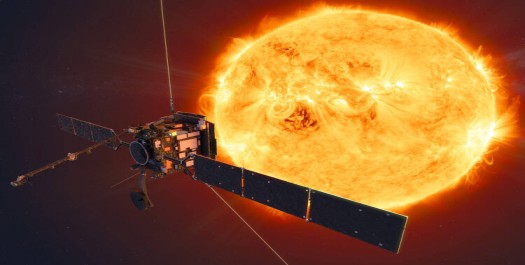After Moon Mission, now eyes on Sun! ISRO to launch Aditya L1 mission to study Sun on This Date
The suits of Aditya L1 payloads are expected to provide most crucial informations to understand the problem of coronal heating, coronal mass ejection, pre-flare and flare activities and their characteristics, dynamics of space weather, propagation of particle and fields etc.
Total Views |
The Indian Space Research Organisation (ISRO) is set to launch its first-ever space-based solar observatory, Aditya L1, on September 2. The spacecraft will lift off at 11:50 Hrs. IST from the Satish Dhawan Space Centre in Sriharikota.
Aditya-L1 is a significant milestone for ISRO as it marks India's first dedicated mission to study the Sun. The launch vehicle for this mission is the Polar Satellite Launch Vehicle (PSLV-XL). The spacecraft has already arrived at Sriharikota and is ready for its journey into space.

As part of the mission, ISRO will send a spacecraft about 15 lakh kilometres away from Earth, which is nearly four times the distance to the Moon, covered recently during July and August. AdityaL1 will take 109 days to reach 1.5 million Km from Earth & it's life span will be more than 5 Years.
This strategic positioning will allow continuous observation of the Sun without any eclipses or occultations.
🚀PSLV-C57/🛰️Aditya-L1 Mission:
— ISRO (@isro) August 28, 2023
The launch of Aditya-L1,
the first space-based Indian observatory to study the Sun ☀️, is scheduled for
🗓️September 2, 2023, at
🕛11:50 Hrs. IST from Sriharikota.
Citizens are invited to witness the launch from the Launch View Gallery at… pic.twitter.com/bjhM5mZNrx
To get to its destination in space, referred to as the Lagrange point 1, or L1, of the Sun-Earth system, Aditya-L1 will first be placed in low-Earth orbit and then subsequently in increasingly elliptical orbits before the firing of the onboard propulsion launches the spacecraft towards L1.
Ultimately, the solar probe will be injected into a large halo orbit around L1. From Earth to L1, Aditya-L1’s journey will take about four months. (The James Webb Space Telescope is in an orbit around Lagrange point L2.)
The major science objectives of Aditya-L1 mission are:
Study of Solar upper atmospheric (chromosphere and corona) dynamics. The mission aims to provide crucial insights into various aspects of solar activities and their influence on space weather.
It will carry seven payloads to observe the photosphere, chromosphere, and the outermost layers of the Sun, the corona, in different wavebands. Four of these payloads will directly view the Sun, while the remaining three will carry out in-situ studies of particles and fields at the L1 point.
Learn all about India's Sun Mission☀ #AdityaL1 here : pic.twitter.com/8diLqKIAhc
— Indian Aerospace Defence News - IADN (@NewsIADN) August 25, 2023
Among thekey scientific objectives of the missionare understanding the reasons behind the formation and composition of solar wind and space weather, studying the dynamics of coronal mass ejections (CMEs), and observing the solar disk. These observations will help scientists understand how CMEs and solar flares are formed.
The Aditya-L1 mission also aims to address some of the unsolved issues in solar physics, such as the heating of the Sun's upper atmosphere and the impact of the Sun's radiation on Earth's atmospheric dynamics and global climate.

